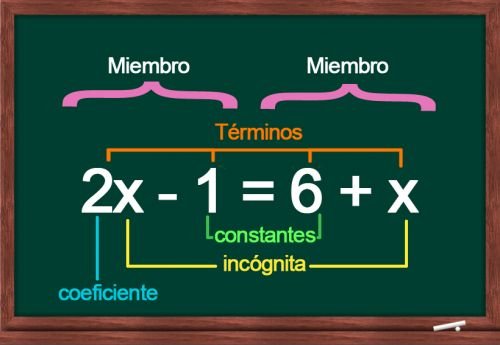What is an equation?
Equation
What is an equation?
An equation in mathematics is defined as an established equality between two expressions, in which there may be one or more unknowns that must be solved.
The equations are used to solve different mathematical, geometric, chemical, physical problems or of any other nature, which have applications both in everyday life and in research and development of scientific projects.
Equations may have one or more unknowns, and it may also be the case that they have no solution or that more than one solution is possible.
Parts of an equation
The equations are made up of different elements. Let's look at each of them.
Each equation has two members , and these are separated by using the equal sign (=).
Each member is made up of terms , which correspond to each of the monomials.
The values of each monomial in the equation can be of different tenor. For example:
The unknowns , that is, the values to be found, are represented by letters. Let's look at an example of an equation.
 Algebraic equation example
Algebraic equation example
Types of equations
There are different types of equations according to their function. Let us know what they are.
1. Algebraic equations
The algebraic equations, which are the fundamental ones, are classified or subdivided into the various types described below.
to. First degree equations or linear equations
They are those that involve one or more variables to the first power and do not present a product between variables.
For example : ax + b = 0
b. Quadratic equations or quadratic equations
In these types of equations, the unknown term is squared.
For example : ax 2 + bx + c = 0
c. Third degree equations or cubic equations
In these types of equations, the unknown term is cubed.
For example : ax 3 + bx 2 + cx + d = 0
d. Fourth degree equations
Those in which a, b, c and d are numbers that are part of a field that can be ℝ or ℂ.
For example : ax 4 + bx 3 + cx 2 + dx + e = 0
2. Transcendent equations
They are a type of equation that cannot be solved only by algebraic operations, that is, when it includes at least one non-algebraic function.
For example,
3. Functional equations
They are those whose unknown is a function of a variable.
For example,
4. Integral equations
The one in which the unknown function is in the integrand.

5. Differential equations
Those that relate a function with its derivatives.

- Update date: March 7, 2021.